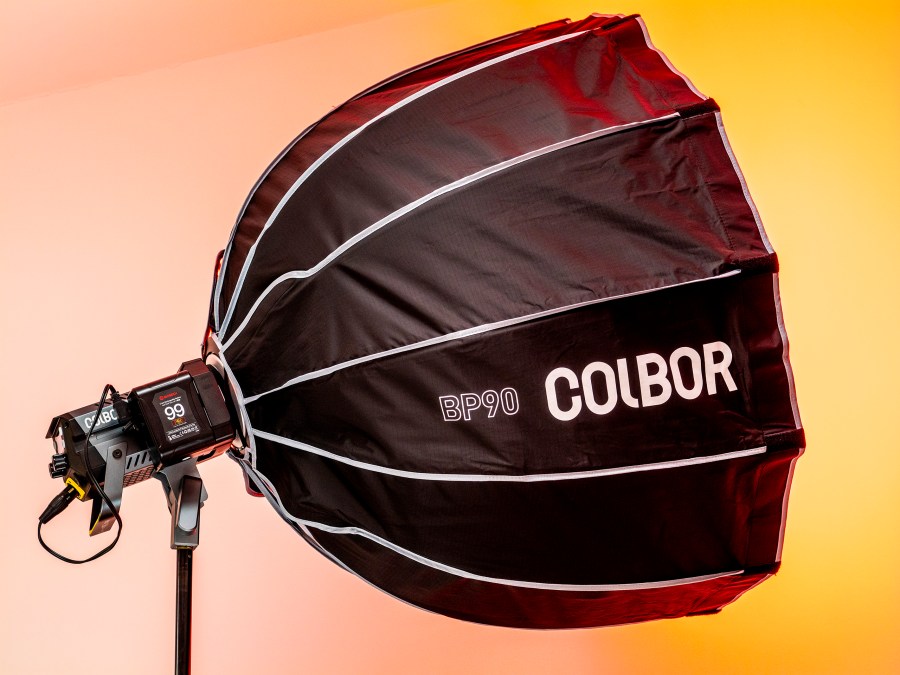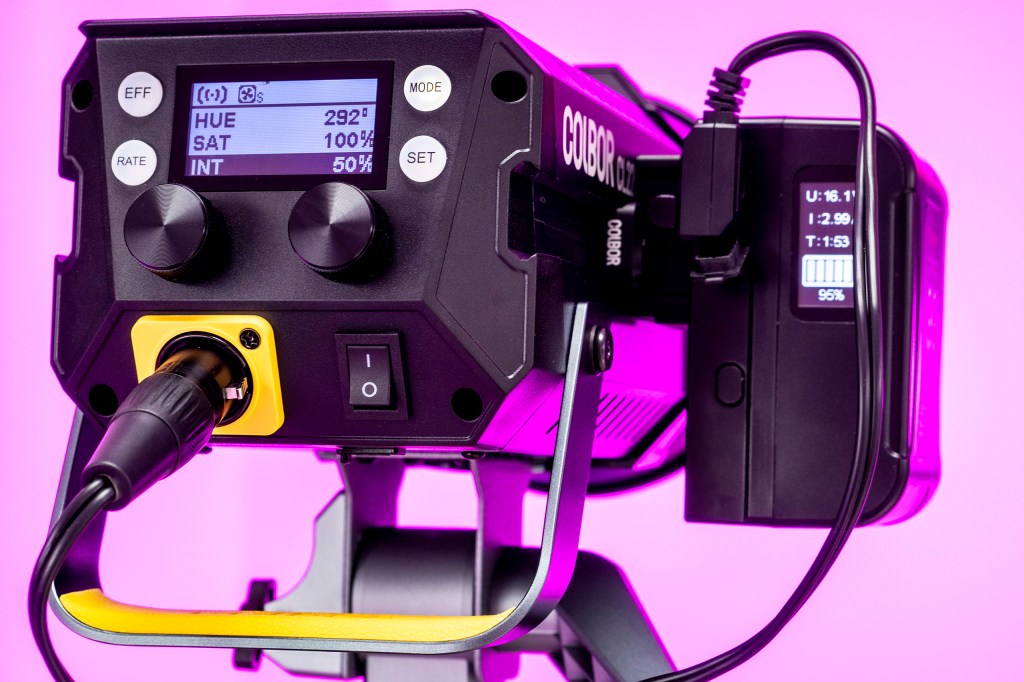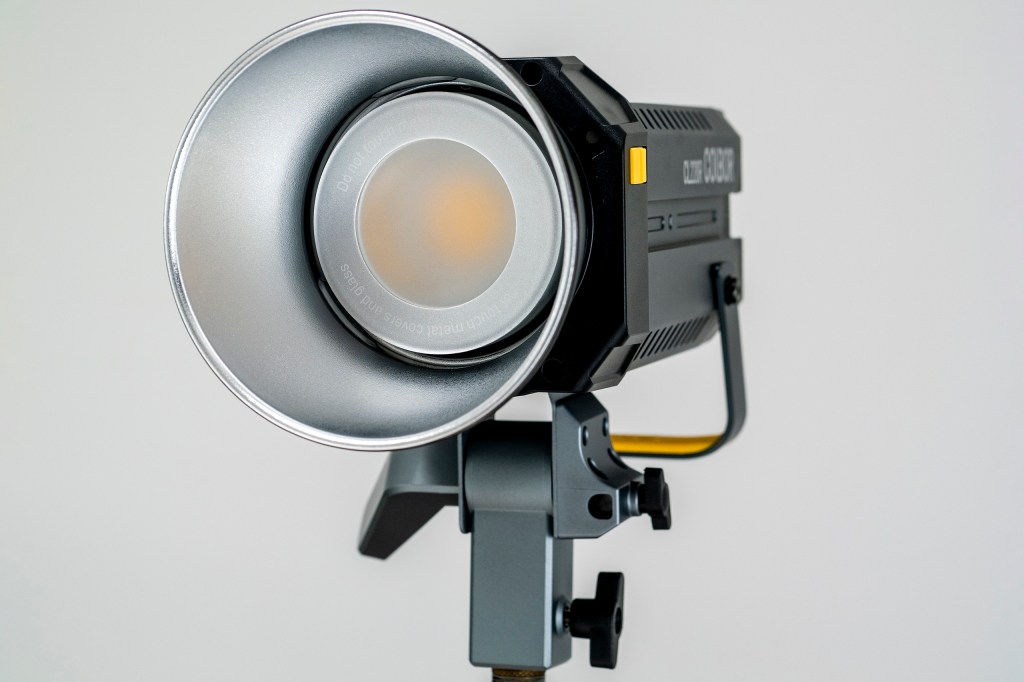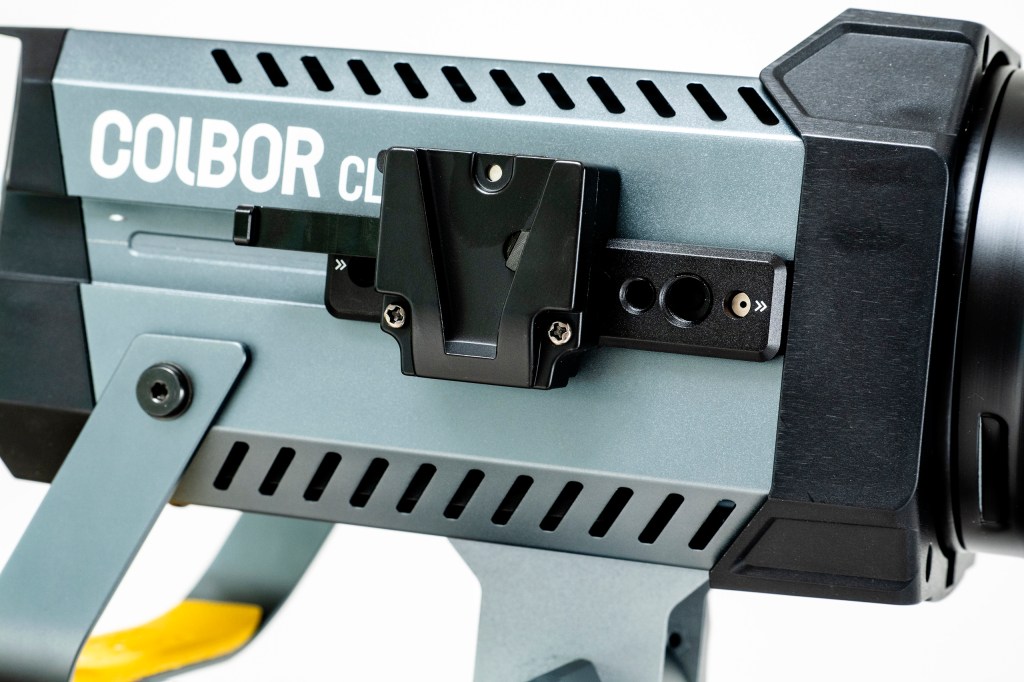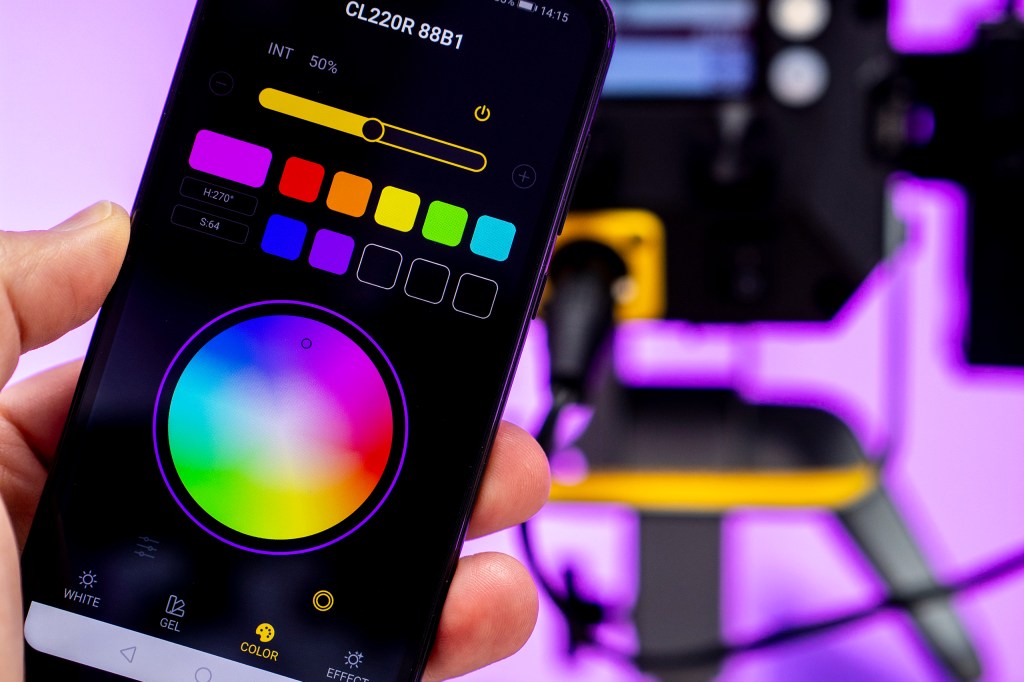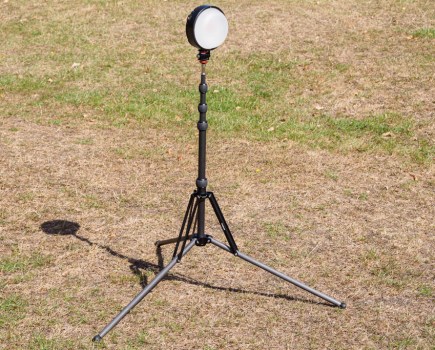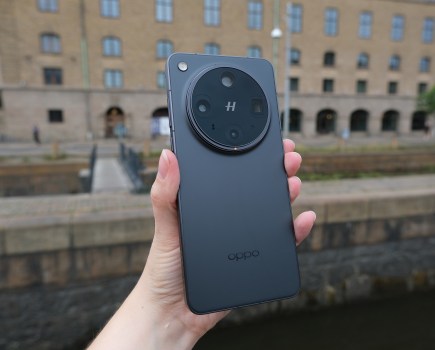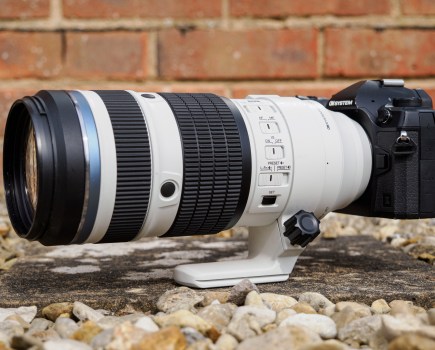Amateur Photographer verdict
A low-cost head that’s simple to use and offers a lot of features, Used as fill light or for adding colour to your background the Colbor CL220R is genuinely useful.- RGB lighting
- Lightweight
- Low cost
- Offers battery power
- Not very powerful in RGB mode
- Battery operation only at 50% power
Not that long ago, if you wanted to use coloured continuous lighting, you needed either a lot of money or a set of gels for your standard daylight head. However, in recent times the price of LED heads, tubes and panels with RGB diodes has dropped in dramatic style. By this, I mean that the technology has become so cheap that new manufacturers are coming on the scene with very low-cost units. We’ve seen a lot of one-colour and bi-colour lights from brands like Nanlite and SmallRig, but not so many with full RGB non-tube heads. So this Colbor CL220R is a little unusual.
Colbor CL220R at a glance:
- $399 / £399
- RGB and Bi-colour LED light
- Gives f/5.6 at 2m, 1/60sec, ISO 400
- Takes Bowens modifiers
- 240x128x219mm, 1.6kg
- https://www.colborlight.com/
Colbor CL220R – Features
The Colbor CL220R is a revised version of the firm’s CL220 220W bi-colour head, but with the introduction of RGB LEDs to add some colour to the mix. While the daylight and tungsten LEDs conform to the headline 220W specification, the RGB LEDs are only 100W. So we should expect slightly less than half the power output when we are relying just on the colours.
The light offers colour temperatures between 2700 and 6500K, easily covering daylight and domestic tungsten, and then all the red, green and blue mixes on top. In the colour temperature modes we can also adjust the green and magenta output, as is becoming common these days, so minor shifts are possible to match ambient lighting more easily.
Key Features:
- RGB: Colour temperatures of 2700K and 6500K as well as Red, Green and Blue mixtures
- Flexibility: The light takes Bowens-mount accessories, and offers a Nato rail for additional fixtures
- Special Effects: 13 effects modes with customisable pulse rates and colours
- Power Options: The head comes with mains power and can also be run from a V-Mount battery
Making the most of the mass of existing modifiers, the CL220R has a Bowens bayonet mount so we can fit very old as well as very new dishes, softboxes and snoots. Unusually though, the light has a slot on each side of its body into which we can slide a NATO rail that can be used to attach further accessories. The rail comes in the kit with the light, and makes it possible to attach a battery to the light so we can use it on location.
A mains adapter comes with the head, but the VM3 V-Mount adapter is optional, and allows a V-Mount battery to be fitted. The adapter comes with a D-Tap to XLR cable, so the battery can be plugged in to the light’s power supply port. It’s a neat idea, and makes the light stand out, as it’s unusual for a unit at this price point to offer a battery solution.
Helping with its portability and suitability for location use are the size and weight of the unit. It measures just 240x128x219mm and weighs only 1.6kg. So it’s easy to carry around and to hand-hold for long periods.
Colbor CL220R – Build and Handling
I’m not sure how much physical punishment the Colbor CL220R will take without consequences. It feels as though it’s made from thin metal and plastic, but I suppose that’s how they keep the weight and the price down. The body will be fine so long as you take care not to bash it around too much, which I’m sure you wouldn’t, and the main handle feels quite strong. My main concern is the moulded plastic arm that’s used to release and tighten the hinged mounting post so we can alter the angle of the light – but again, with careful use it will probably be fine.

The main controls of the light are centred around a screen on the rear of the body. This screen is a fairly primitive affair, but it does what it needs to do very well. We have only four buttons and a pair of dials to use, so nothing is too challenging and we can get where we want to go very quickly.
Firstly, the Mode button switches us between Correlated Colour Temperature (CCT) for controlling the Kelvin value and brightness of the light, and the HSI mode that allows us to control colour Hue, Saturation and Intensity. You just have to remember which dial does the scrolling and which adjusts the values of the menu item on the screen. Some readers will be delighted that when the latter dial is turned, the numbers are shown super-sized on the screen – so you won’t need to switch glasses.
We have an effects (EFF) button too, that takes us to the pre-programmed flashes, fire, fireworks, gun shot, and lightning etc menu. We have 13 effects to choose from, and the Rate button allows us to adjust the frequency of the flashing, pulsing and so on. We can adjust the colour temperature of some of the effects, and there are three types of police emergency light effects to choose from depending on what your local force uses.
The Set button allows us to connect the head to a phone app for remote control, or adjust the way the cooling fan works and the way the light responds to instructions. It’s the Colbor Studio app that controls the light and which offers a more convenient and quicker route to all the controls via a more sophisticated display than the light has itself. The app pairs quickly and offers us control of multiple lights and groups of lights, as well as the ability (with some phones) to sample colours of real objects via the phone’s camera, or to match colours in pictures in your phone gallery.
At the time of writing, the app is available in the Apple app store but not the Android Google Play store. I used it on an iPhone but my mother told me never to download apps from websites – so I loaded the Android version onto a disconnected and wiped phone. I don’t recommend doing it on your main phone until the Android app is available through the Google Play store
Colbor CL220R – In use
While you aren’t going to use this CL220R to light a street scene in the middle of a summer’s day, it is certainly bright enough to shoot a nice portrait in the studio with a fast lens. According to Colbor, its 220W output offers 30,600 lux at 1m when the CCT mode is set to 5600K. In my real-life tests, this translates to f/5.6 at ISO 100 and 1/60sec at 1m – or f/2.8 at 2m. Crank your ISO to 400 and you’ve got f/11 at 1m or f/5.6 at 2m.

The 100W RGB modes offer significantly less light though, giving me about f/2.8 and 4/10ths at 1m, and f/1 and 3/10ths at 2m at ISO 100. Switching up to ISO 400 gave a more respectable f/5.6 3/10th at 1m, and f/2.8 at 2m. These aren’t the readings of a Hollywood movie light, but they will do for a whole lot of purposes, especially if you have a camera you trust at ISO 800 or more. These measurements were taken with the supplied reflector fitted, so expect soft boxes to further reduce the light reaching your subject.

With a battery fitted the light won’t allow us to go beyond the 50% power setting. This slightly, but not completely, takes the shine off the light’s ability to run on batteries in the first place.
Colbor CL220R – Verdict
I really love low-cost products that give us something different and are genuinely useful, and this Colbor CL220R is one of those. Even if you aren’t using it as a main light, it can add colour to a background or a splash of colour to the edges of your subject. But those unafraid of higher ISO settings will have the most fun. That it can take a battery is a real bonus, although a V-Mount battery will set you back a further £100. But it adds a whole lot to the utility of the head, and costs less than the difference between the battery and non-battery options other brands offer.
It’s a very nice little head and one that is simple to use, offers a lot of features, and is one that will provide a lot of fun for a quite moderate outlay. So long as you remember this is a low-cost unit and to not expect the Earth, you will be very happy. I’ve loved using it. It comes in a nice case too!

Related reading:
- Best lights for video
- Rotolight Anova Pro 2: One of the brightest LED lights ever launched?
- Rotolight AEOS 2 PRO Hands-On Review
- Rotolight NEO 3 PRO Hands-on Review
Follow AP on Facebook, Twitter, Instagram, YouTube and TikTok.

